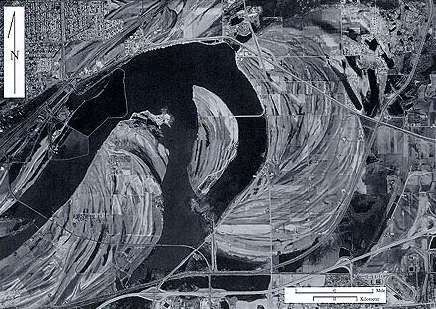
Aerial photo of Horseshoe Lake, an abandoned Mississippi River channel.
It is important to understand that the deposits of this late Pleistocene American Bottom canvas, later modified during the Holocene Period, accumulated and eroded in response to worldwide climate-driven geological processes and events. Thus, the Mississippi River valley and its floodplains, including the American Bottom, contain detailed records of these major geological and climatic events. The complexity of these features is staggering and considerable work is needed to develop a better understanding of the geomorphic history of the Mississippi River valley and their relation to worldwide climatic trends.